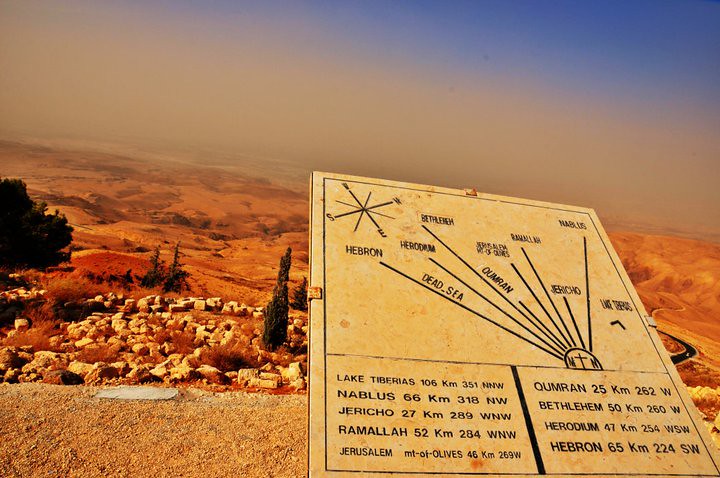Bible Walking: Moses Ascends Mount Nebo
This post is part of a Bible Walking series I am building that integrates biblical geography with walking for exercise. My thinking is that when we walk similar distances as those we read about in scripture, we gain a better understanding of the text.
Each post will include several elements. Use the Interactive Google Map to explore the route. Try printing off the map and track your own walking distances until you have completed the same distance. The Challenge provides action points of Bible readings, walking distance totals and key questions to consider. And References will always be given at the end for you to explore.
At the end of the Pentateuch, Moses is allowed the opportunity to see the Promised land with his own eyes, but he is not allowed to enter. And so he climbs a nearby hill and despite his age, his excellent eyesight allows him to see miles away.
The first location mentioned are the Plains of Moab. Later in Joshua 2:1, we learn that the Israel camp was located at the Acacia Grove. Other translations give the name of Shittim.
The location that Moses traveled to was Mount Nebo on top of Pisgah. This has often been recognized as the location where the law was written down and given to the people (Deuteronomy 31:9). Starting below sea level, the climb is almost 1000 feet up. The first half is more flat and Moses probably passed through the Israelite camp on his approach to the mountain.
I have not found many clear photos of the view from the top, though one sign describes being able to see Bethlehem and the Mount of Olives. It's interesting to think how different the weather and ecology was nearly 3000 years ago. There is an amazing mosaic on the floor of the ruins depicting animals not usually found in the area today.
This section follows closely on Calvin's description of Moses "promulgating the law" and the consequences of keeping or breaking it. Taken as a whole, the picture of the law giver Moses being denied entry into the promise land is a striking picture of our position before God apart from Christ.
Each post will include several elements. Use the Interactive Google Map to explore the route. Try printing off the map and track your own walking distances until you have completed the same distance. The Challenge provides action points of Bible readings, walking distance totals and key questions to consider. And References will always be given at the end for you to explore.
Lookout Mountain
 |
| Photo by Jeff Nesanelis from Flickr |
The first location mentioned are the Plains of Moab. Later in Joshua 2:1, we learn that the Israel camp was located at the Acacia Grove. Other translations give the name of Shittim.
The location that Moses traveled to was Mount Nebo on top of Pisgah. This has often been recognized as the location where the law was written down and given to the people (Deuteronomy 31:9). Starting below sea level, the climb is almost 1000 feet up. The first half is more flat and Moses probably passed through the Israelite camp on his approach to the mountain.
I have not found many clear photos of the view from the top, though one sign describes being able to see Bethlehem and the Mount of Olives. It's interesting to think how different the weather and ecology was nearly 3000 years ago. There is an amazing mosaic on the floor of the ruins depicting animals not usually found in the area today.
Law and Death
John Calvin states in Institutes of Christian Religion the following:
The doctrine of the Law transcending our capacity, a man may indeed look from a distance at the promises held forth, but he cannot derive any benefit from them. The only thing, therefore, remaining for him is, from their excellence to form a better estimate of his own misery, while he considers that the hope of salvation is cut off, and he is threatened with certain death.
This section follows closely on Calvin's description of Moses "promulgating the law" and the consequences of keeping or breaking it. Taken as a whole, the picture of the law giver Moses being denied entry into the promise land is a striking picture of our position before God apart from Christ.
The Challenge
Bible Reading: Deuteronomy 34
Walking: 17.6 miles
Key Questions:
- How often did Moses climb this mountain?
- What time of day did Moses leave?
- Was the sun rising or setting as he gazed across the land?
- How far into the Promised Land was Moses able to see?
- Who climbed the mountain with Moses?
- What happened to Moses' body?
.jpg)




Comments
Post a Comment